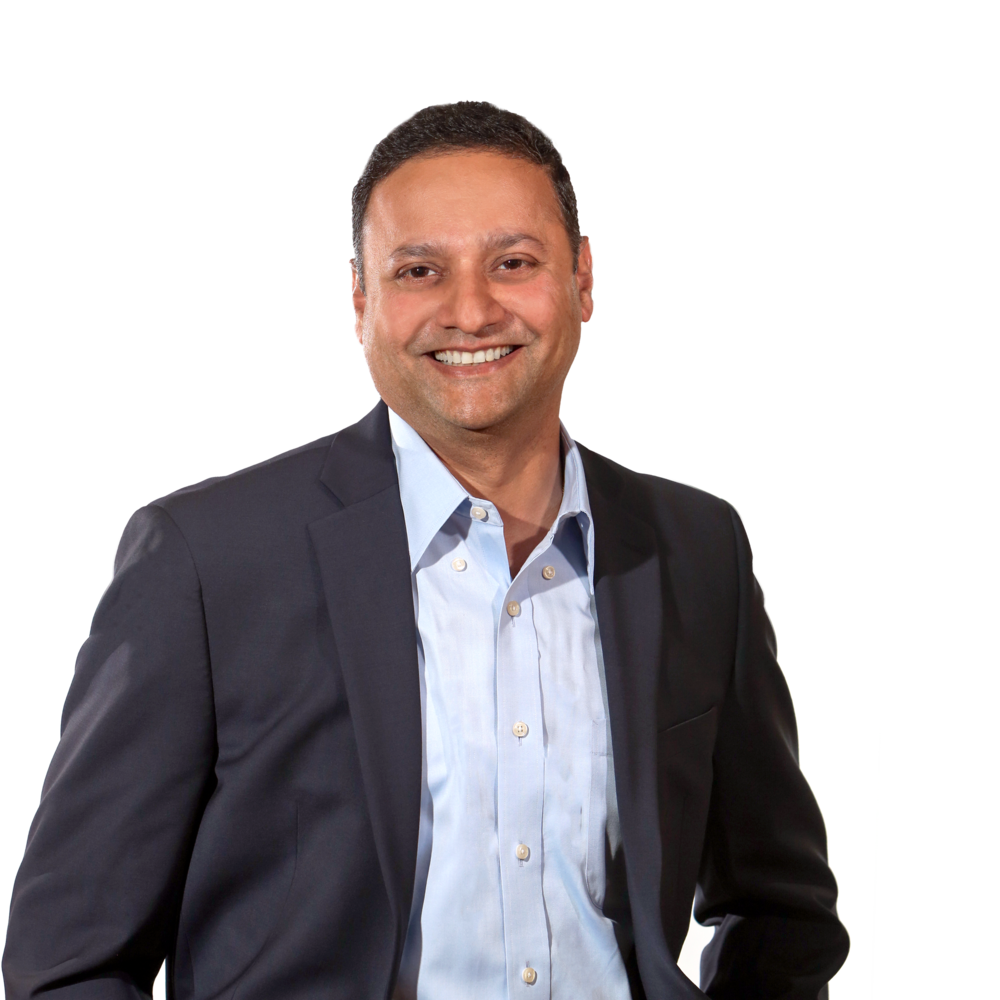
The Pivot: A Seasoned Corporate Executive Turned HealthTech Founder
- Published
- Sep 13, 2023
- Topics
- Share
Founder and CEO of Reimagining Lab Information (“reLIMS”) and current President of TiE Silicon Valley Anita Manwani has a career distinguished by a series of pivots. In this TechTalk episode, Anita has a conversation with EisnerAmper's West Coast Technology and Life Sciences Practice Leader Amar Bhatkhande about her journey from seasoned corporate executive to successful healthtech founder—and how she’s helping foster entrepreneurship among the next generation.
Transcript
Amar Bhatkhandé:
Hello and welcome to yet another episode of Tech Talk. I'm your host today, Amar Bhatkhandé, Technology and Life Sciences West Coast Practice Leader at EisnerAmper, and with me today is one of 80 women recognized in the country for her leadership in technology, and top 100 women of influence in Silicon Valley.
Conversations can help you navigate your entrepreneurial journey. Today you'll get to hear firsthand from Anita Manwani about her journey as a seasoned corporate executive turned entrepreneur and her vision for the next generation. What you hear today may give you a different perspective and influence your next business decision.
Anita, I'm so happy to connect with you today. Thanks for joining me.
Anita Manwani:
Thank you, Amar. Thank you very much for including me.
AB:
To start, please tell our listeners a little bit about yourself.
AM:
Gosh, that's always a tough question. But I look back at my journey in life so far and I feel that it's been an accidentally blissful journey based on what the universe has offered. And I think a big part professionally and personally has been the many mentors that I have had. Though growing up, I didn't even know what was the meaning of mentors, and yet I remember meeting Malti Tambe, who was the first woman IAS officer in India and she was in the same batch as my dad and I got to meet her. And along the way, I think I was very fortunate for many, many folks who touched my life. And more so what stands out is, of course, my parents and my mentors in the US.
So, my first job, I was an accidental graduate student, came for my further studies at University of Cincinnati, Ohio. And then accidentally, I got my first job in a robotics company. And after that, I got recruited to NASA Ames and accidentally got put on the NAS, which was the Numerical Aerodynamic Simulation program.
And from there, it wasn't looking back for me because Hewlett-Packard recruited me. I started in the first 32-bit operating system program and the release of the first 32-bit operating system and moved portfolios only after the 12th release of HP-UX, which was the 64-bit release. And along the way, I think HP is where I really grew up. And when HP split into Agilent, I had in that course of 20-odd years, I'd had the opportunity to do global assignments, work in many functions, services, P&Ls and so on.
And I'm here today more as the accidental entrepreneur that also just started, not because I had this vision to solve a world problem. It fell into my lap. It felt like it was the right thing, and along the way we made pivots. So, really, that's me. I really don't have a very chartered-out life. I've just taken it as it comes.
AB:
Well, that's really fascinating and people would love to hear more about it. So I do remember in our conversations that you said that before you became an entrepreneur, and that's what you just alluded to, you were a very successful person at HP. But even after that success, I think you decided to pivot within the company, within HP. Can you tell us one of your key takeaways from that experience of pivoting within HP?
AM:
So, the pivot wasn't something that I thought of, honestly. The pivot was an opportunity. I had done HP-UX as a product. I had led HP services, businesses, rejuvenated our India software operation, in Y2K times, brought in a lot of the big five vendors to help us.
But the pivot really came when HP just before HP split from Agilent and I was told that as part of my fast track, I needed to prove that I could also do test and measurement businesses. And that's when the pivot came, when I had to go manage a P&L that was hardware and software in an industry that I didn't know as well because I was mostly in software and systems. And now, I was in the world of mobile computing and looking at performance measurements and how to give people quality of service. And so that was a big pivot, but an exciting one. I learned a lot.
AB:
Great. I also do remember that you telling me once that it's not just about the product but realizing the potential of the product. I think that's what I think is your famous quote, I guess.
AM:
Yes. Well, all of us can build products but I think that by the potential of the product, I really meant always how the product can be used and how it can actually solve problems and make the customer's life easy. Because if you don't have that, people aren't going to buy your product.
And so when you're sitting in a large organization, oftentimes you're building this product with a set of specs, but the specs have to relate back to what customer problems they're going to solve. And I think a lot of times when we are into hardcore product engineering, we shy away from those services kind of roles, but those are the roles where people actually get to interact with customers and understand how the product is being used in their work environment and their workflows.
So, that was the big learning that there is a flare and hierarchy, I guess, that exists in the tech world. Are you in development or are you in support? And now I feel that it's come a little bit more of a realization that you see more companies having a customer experience C-level executives, and I think that's a function of really focusing on that.
AB:
Now I'll tell you, you make it sound so humble and you are humble because I do know that you were in one of the 20 potential executives in HP's first-ever global leadership program. And then you've been there, you took another pivot to become a founder of reLIMS. So can you tell us a little bit more about reLIMS and what you have learned since launching your company back in 2007?
AM:
So I think I was an accidental entrepreneur. When I left Agilent, it was purely to kind of focus on my own kids and really take a break. And in the process, very accidentally, an opportunity came up where I was to start a company that would provide analytics to a law firm. And from that, we landed up doing analytics for pain management companies, and that business grew. We saw that there was obviously a gap in the lab information management solution because why would they come to another company to provide analytics and fill in some of those gaps?
So, we decided to pivot to a product, and that's what reLIMS is about. It's end-to-end workflow management both from a B2C and a B2B. When we say B2B, it means when a physician orders or a hospital orders your test and then the results are managed all through the laboratory from collection to preparation of this sample to actual integration with the test machines, which many a time are Agilent and Thermo Fisher and others, to the actual report going out in the format with the right triggers. The system also has the ability to actually manage inventory in realtime and give triggers. Its completely HIPAA-compliant. And in COVID times, we had to move to a B2C where we had to integrate with logistics and we had to integrate with payment systems. So, travelers, when you and I got into a plane, you could go to any lab and just pay by cash and get your test.
AB:
So, seems like it's safe to say that reLIMS is re-imagining the patient experience, I guess. Right?
AM:
I think it's more than imagining the patient experience. It is really simplifying the lives of every lab professional and giving access to the patients, to the labs. Typically, the access to the patient is coming through the hospital, their physician or the EMR, EHR system.
AB:
Perfect. So now let me focus on the latest chapter in your growth, which is the TiE chapter, right? As a chartered member of TiE Silicon Valley myself, I've witnessed your incredible focus on giving back to the community, particularly as the current president of TiE Silicon Valley. Why are you so passionate about engaging the next generation of entrepreneurs and what are some of your goals for this next year as a president?
AM:
So I'll kind of go backwards. My goals for next year are three things. I mean, and they have been ever since I kind of joined the board, is really to elevate the brand of TiE. And it's not just about honoring the legacy, it is also about being relevant to today's context. And as you know, we are the founding chapter of TiE and it was founded 31 years ago to really provide and foster entrepreneurship by providing a platform that included corporate executives, investors and gave entrepreneurs from South Asia easy access to the investment and the buying community in the technology world.
But that need has evolved and we have a lot of young entrepreneurs that are only a tap away from the big investor or the big decision maker in corporate America today, from our community. So, I think making it more relevant means expanding our influence just beyond the South Asian community, but also making sure that we attract the younger generation.
And come to why the younger generation is so important is because I think there is a lot to be done outside in the vicinity of Silicon Valley. And I think it is the youngsters who will, one, be able to carry that torch forward for fostering entrepreneurship. But more importantly, how will they engage with TiE? They can only engage if they feel connected, if we address new technologies, new ways of doing business, which is what has happened in Silicon Valley today.
I mean, we've been talking about AI ML, we've done summits in blockchain and, of course, we decided to add on a track for Gen AI, which was standing room only, and we are continuing that pivot. On August 10th, literally three days from now, we will have a Gen AI meetup, there'll be a regular cadence of this. We've got the Golden Globe Theater where we bring young people who are talking about their journeys, their successes.
And to me, success is not just measured about exits. It's really what problems are you solving? Are you having disruptions? Whether those disruptions result in a fantastic financial outcome, that's great. But with the youngsters, they're not as focused on did we get that unicorn or they think by virtue of being born with a lot are more focused on social impact. So, I think we need to just engage the youngsters in a different way with more focus on the technologies that are relevant for today. And no longer is it just cloud and healthcare, but it has to be... Cloud is now a given, right? Everybody has cloud in the infrastructure. Security is a given. Everybody has to have that in their infrastructure.
So, we have to change the framework of our conversation, number one, and two, bring youngsters into the mix so we can all learn from it and figure out how best to serve them.
AB:
Now something else I've heard you saying is you don't have to do everything yourself. For a founder, I imagine that can feel like both a blessing and a curse, right? So, what exactly do you mean by that and what help have you sought out along your entrepreneurial journey?
AM:
So, I think two things. One is when we say we don't have to do everything ourselves, I think as an entrepreneur you will attest, too, Amar, that an entrepreneur has to be ready to do a lot more themselves because sometimes you just can't afford to have that many people or sometimes there's a crisis and your team needs to get that supplemental, additional help and you don't have the large C-suite that's available to you.
And what I meant there is to don't have to do everything yourself is really no matter what that race is, whether you have five people or you have 500 people, it's one thing to win the race. And I think we are all by nature of being in the Valley, we are competitive and we want to do our best and give it our best, but you can't win the race alone. Even if you think you can run it alone, there is no fun in winning it alone unless the team has won it with you and unless you have won it with the team.
So, one of the things that I kind of translate that to is along the way, anytime that one makes a decision that is resulting in some change from the norm or that I may not have communicated the mission or the objective very well, is to actually explain why I am doing that.
So, for instance, right now in TiE, almost every conversation is about engaging youngsters and engaging new technology people. And so every conversation, whether it is the menu, whether it is the location, whether it is the kind of speakers we bring, it's all about engaging the youngsters. Our Golden Globe platform brings people, they just talk about their stuff, and it's not about the financial outcome because all these kids and all these young talent is going to win the race and they're all going to win it in some form or the other. You and I may not relate to some of their metrics, but I think by the time they win their race, we will applaud them for the metrics that they're going after.
AB:
I absolutely agree with you that, that's the thing. It's not about us, it's about them and the next generation. So great. My last question for you is my favorite, and it's a question I ask each one of my guests. What's one conversation you have had that continues to influence you today?
AM:
If I can share two. One is when you are being... I have always been asked to lead change in whatever organization I've been in, more so in HP and Agilent, and change is always hard. And at one point, my SVP told me when I told him it wasn't possible to deliver a product in that three year date that there had been set, it was a long time, there were going to be 900 people working on this. So, can you imagine having those kind of resources and everybody saying, "I don't think we can meet the date"? Of course it was a chip involved with Intel, as well. But he was very clear. He said, "We didn't give you this job to win the popularity contest. We gave you this job to get the product out three years from now."
And I learned a lot by that just two statements that he made is when you make change, there's going to be resistance. And it's not resistance because people want to resist. It's because your job is to make sure everybody buys into that goal and get to the finish line with you.
And I think the second conversation that always is at the core of my being is one from my dad who told me that at every point, all of us have crises and ups and downs in our lives. And so he, I know, always used to say, "Whenever you fall, don't spend your time saying, 'Why me?' Quickly brush your knees and start running again." So, those are the two I live my life by.
AB:
That's incredible. How many times do I hear these... I mean, I have this question, people always quote their parents and I'm full faith in it of parents are never wrong. At that moment we might have thought, "Hey, what are they trying to tell us?," but I do believe those are the words that we will keep with ourselves in our hearts.
So, anyways, Anita, thank you for taking time to have conversation with me today. And thanks to our listeners to tuning into Tech Talk.
Be sure to subscribe to EisnerAmper podcast to listen to more Tech Talk episodes or visit EisnerAmper.com for more tech news you can use.
Transcribed by Rev.com
Also Available On
TechTalk Podcasts
What's on Your Mind?
Start a conversation with Amar
Receive the latest business insights, analysis, and perspectives from EisnerAmper professionals.

